As usual, Thursday was evil dex night. It was also a moonless night, so I headed out to Anza Borrego again for the first real tryout of my new equatorial mount. For those of you wondering why I don’t go out to Joshua Tree instead, it’s because that’s a 4-hour drive. Anza is more like 2½ hours, which is plenty long enough. The final half hour looks mostly like this:
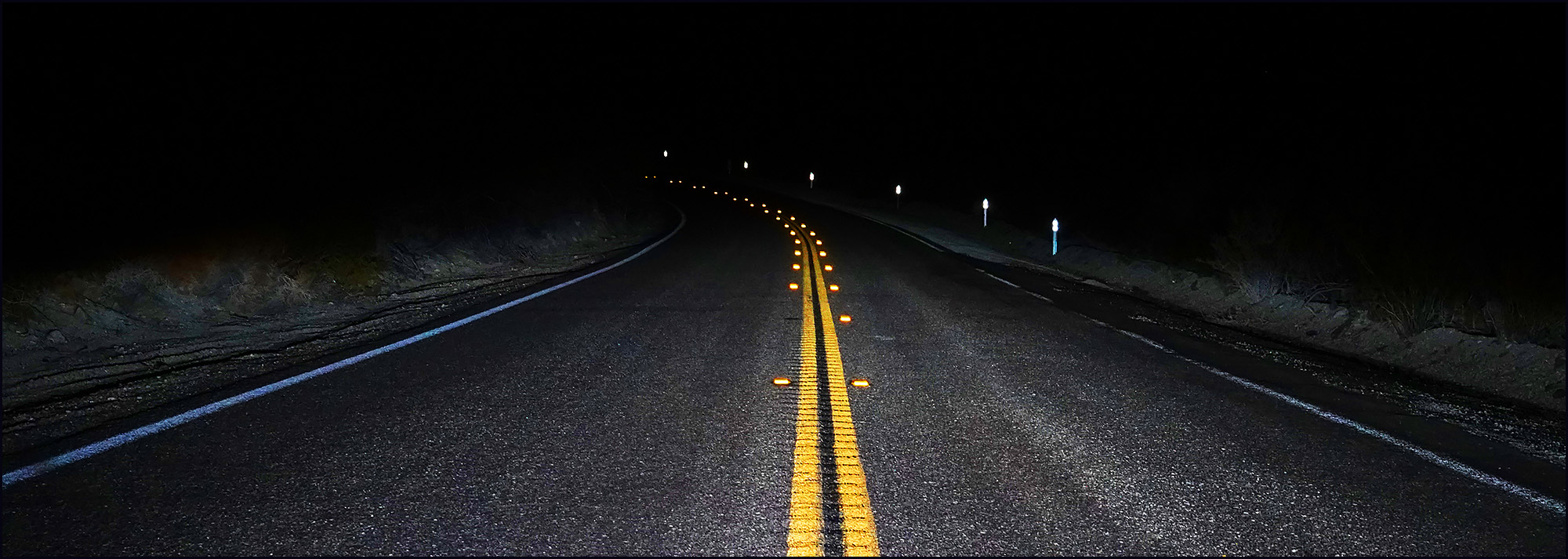
I got out there around midnight, and when I stepped out of the car, I discovered that it was—warm. Really? What’s up with that? It was also gusty. It turns out there was a Santa Ana-ish wind blowing up there, and blowing pretty hard. In fact, hard enough that I was wondering if my camera would stay steady. But I went ahead and set everything up, got what I thought was a good fix on the north celestial pole, and pointed my camera toward the Milky Way. I picked a shot with a single tall plant jutting into the sky, and opened the shutter. It turned out not to be a plant at all:
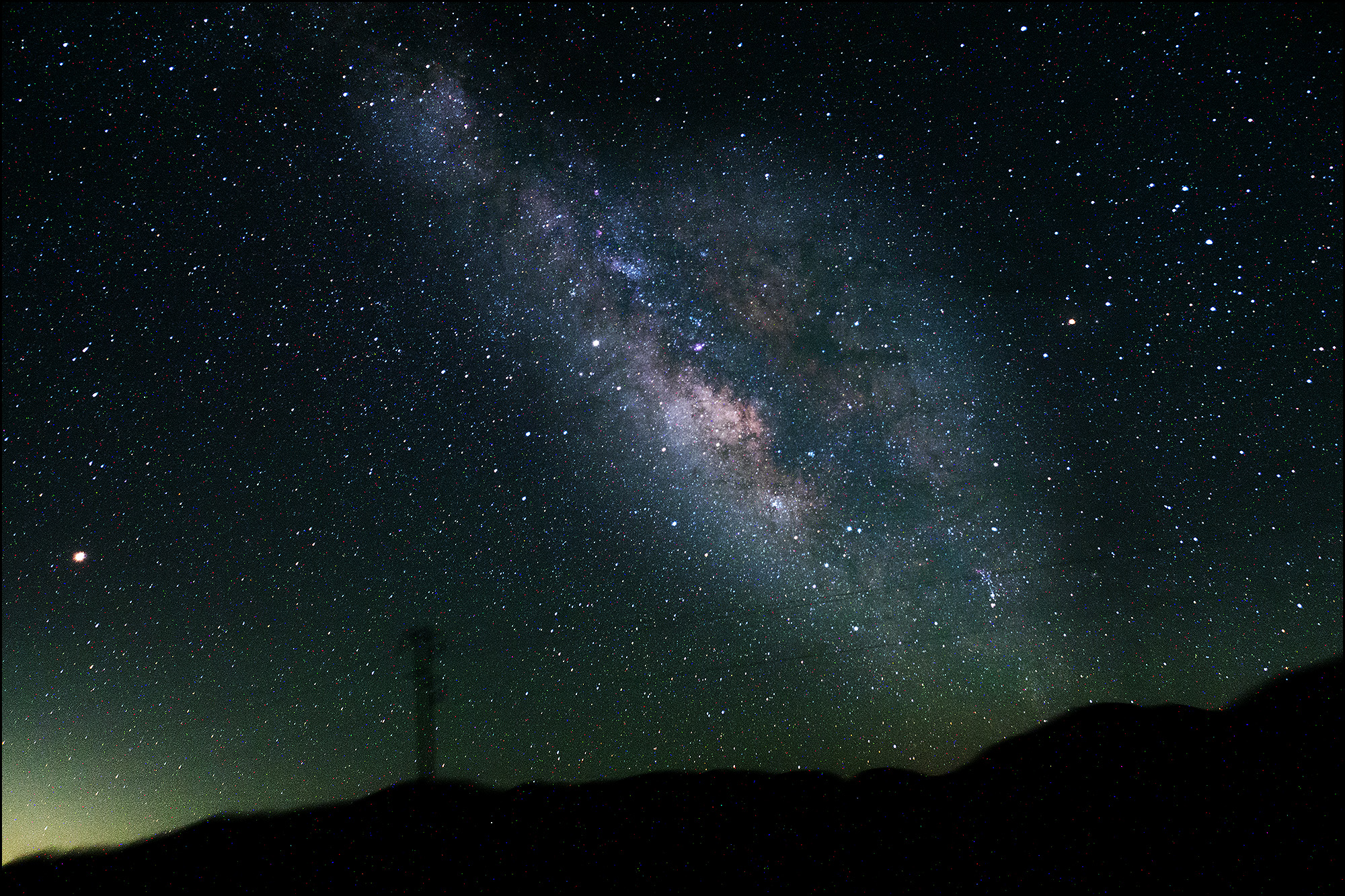
It’s a power pylon, with a bunch of power lines strung across it. I was disgusted. So I packed up and drove to a different spot. When I got there, I set up the camera in the lee of my car so the wind wouldn’t toss it around, and then went hunting for the NCP again. Before I could get started, however, I was viciously attacked. I still don’t know what it was, but it was about the size of a golf ball and packed solid with the most unbelievable thorns. It stuck to my shoe, and when I bent over to brush it off it stuck to my hand and delivered about a dozen razor-sharp thorns into my skin. I yelped, tried to brush it away, and it ended up sticking to my shirt. So now I had this monstrous thing stuck to my shirt, my hand was bleeding, and I was trying to figure out how to get rid of it. Finally I did, and pulled out all the thorns too. Eventually the bleeding stopped.
I didn’t realize this was such dangerous work. But I soldiered on, got confused about which star to sight on, and eventually found Polaris about half an hour later. Then I looked up and saw the moon rising just barely above the horizon. The moon? I didn’t think it was due to rise until about 4 am. I must have read the chart wrong, because it was 2 am and it was coming up. But even though this was bad news, I will say that it was pretty magnificent. The wind was kicking a lot of dust and dirt into the sky, which made the moon glow a bright rust color:
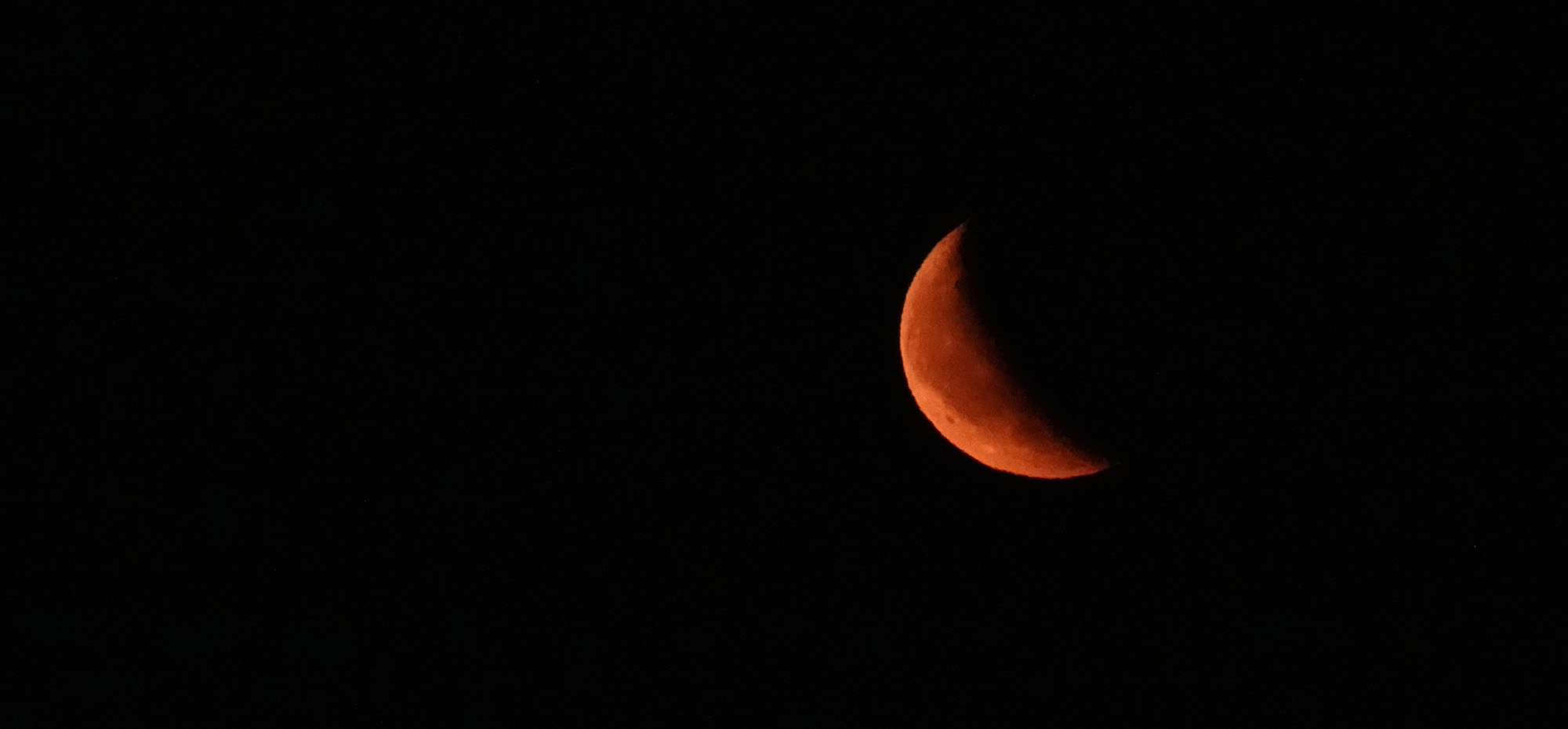
The resolution is lousy thanks to the dust, but the color is pretty amazing—and it was even more spectacular in real life. Unfortunately, this now meant that I had both a hazy sky and a rising moon to ruin my pictures. But what could I do? I wanted to test the equatorial mount, so I took some pictures. Here’s the Milky Way again:
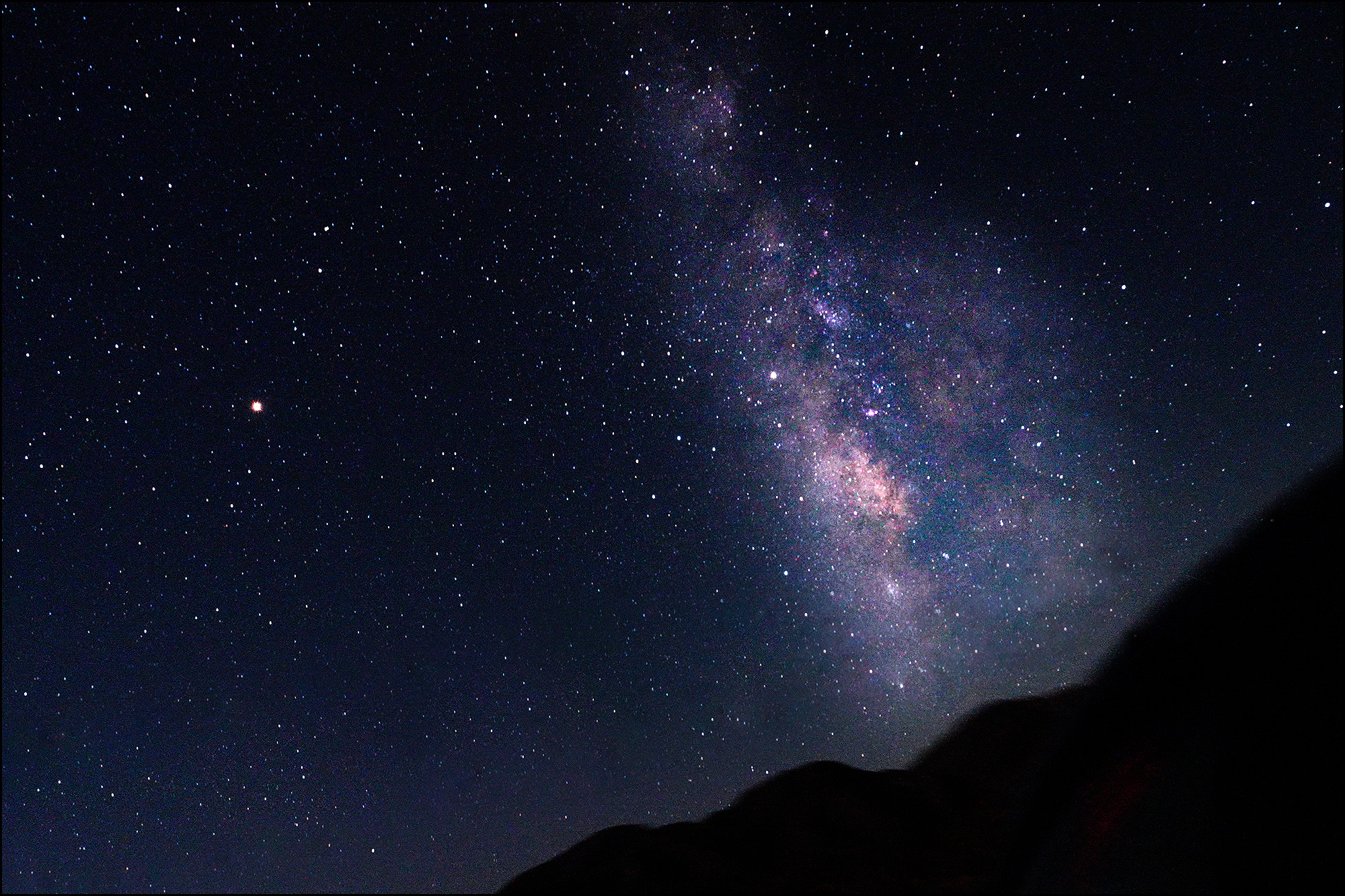
Thanks to the moon and the haze, the picture itself isn’t that good. However, shooting at a low ISO with a long exposure on the equatorial mount definitely produced a less noisy image. What’s more, the mount worked pretty well. It wasn’t quite dead on, but it did well with a 5-minute exposure.
On the other hand, I failed completely with the RAW images. I took five RAW shots, and they were noisy as hell—including some regular red streaks all over the frame. I stacked them using DeepSkyTracker, which worked fine but didn’t remove the red streaks. I also found myself unable to do much editing on the image after it was finished. There’s obviously something I’m missing here, so I’ll keep looking into it.
Hopefully I’ll do better this week. I’m headed up north on Thursday to visit a friend in Chico, and since I’ll be up all night I plan to drive into Plumas National Forest, which is supposed to be one of the truly dark spots in California. If the weather cooperates, I should be able to get some good pictures. We’ll see.
UPDATE: I almost forgot! I was also going to try stacking the RAW frames in Photoshop to see how well that worked. Answer: it seems to work pretty well. Here are the five stacked RAW images, aligned in Photoshop and then image processed:
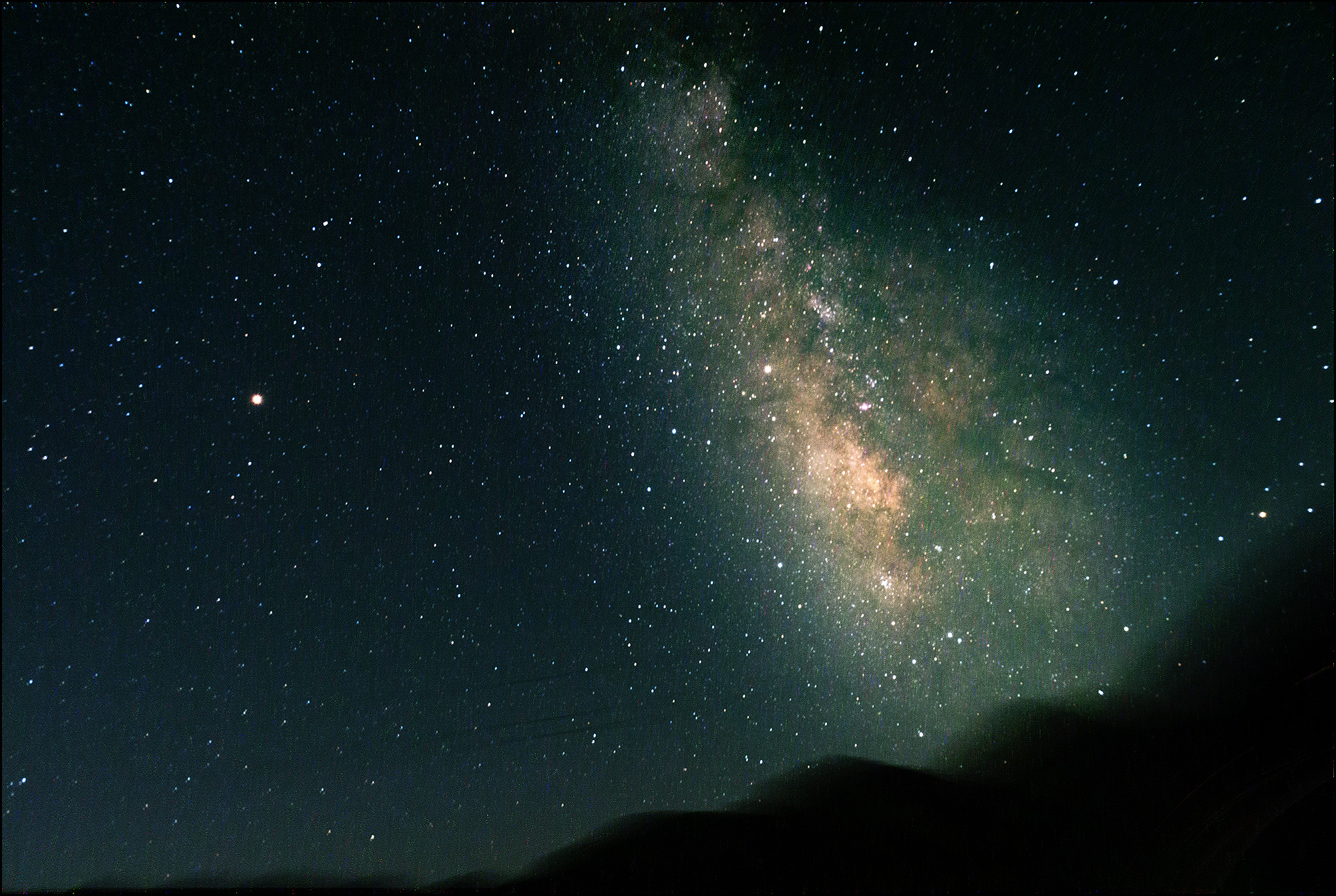
The alignment worked well, and when I look at the full-size images it’s clear that the stacked version has far less noise. However, the red streaking is even worse. I’m not sure what’s going on here. If these are hot pixels, then (a) my camera has a lot of hot pixels and (b) they aren’t appearing at the exact same spot in each frame, so the noise reduction process isn’t catching them. For now, I’m still puzzled. I may need some pro advice here.
I’m also still unsure of which produced better results: the stacked image using the stacking algorithm’s noise reduction, or a simple JPG image using the camera’s internal noise reduction. Hopefully I’ll get some really nice, clear images next Thursday without moon or haze. That should help the comparison.














